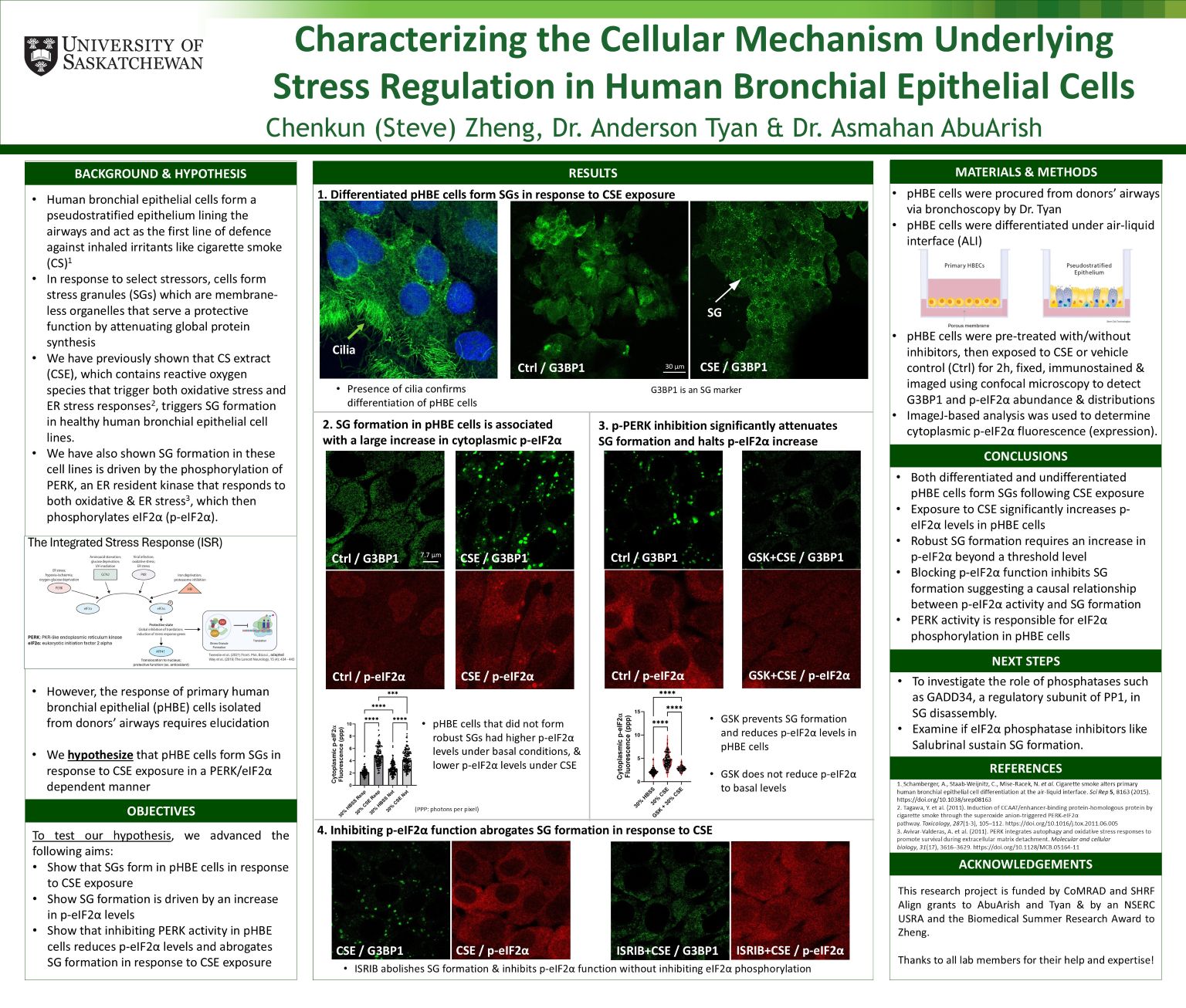
Characterizing the cellular mechanism underlying stress regulation in human bronchial epithelial cells
Chenkun (Steve) Zheng
Human bronchial epithelial (HBE) cells lining the airways are the first line of defense against inhaled irritants. Damage to these cells in lung diseases like chronic obstructive pulmonary disease compromises their protective function. We previously demonstrated that human bronchial epithelial cell lines form stress granules (SGs) when exposed to cigarette smoke extract (CSE). This response hinges on the activation of the integrated stress response (ISR) pathway through phosphorylation of the PERK kinase, which phosphorylates eIF2α, driving SG assembly. We hypothesize that primary HBE cells isolated from donors’ airways behave similarly by forming SGs in response to CSE exposure, mediated by the activation of the ISR pathway. Our results show that both differentiated and undifferentiated HBE cells form SGs in response to CSE, and upon inhibiting the actions of phospho-eIF2α (p-eIF2α), SG assembly ceases. Furthermore, we report that threshold levels of p-eIF2α must be overcome for SG assembly to occur. We also show that inhibiting the action of p-PERK reduces p-eIF2α levels and abrogates SG formation. These findings suggest that the PERK/eIF2α axis of the ISR pathway governs SG assembly in both cell lines and primary HBE cells in response to CSE exposure.
